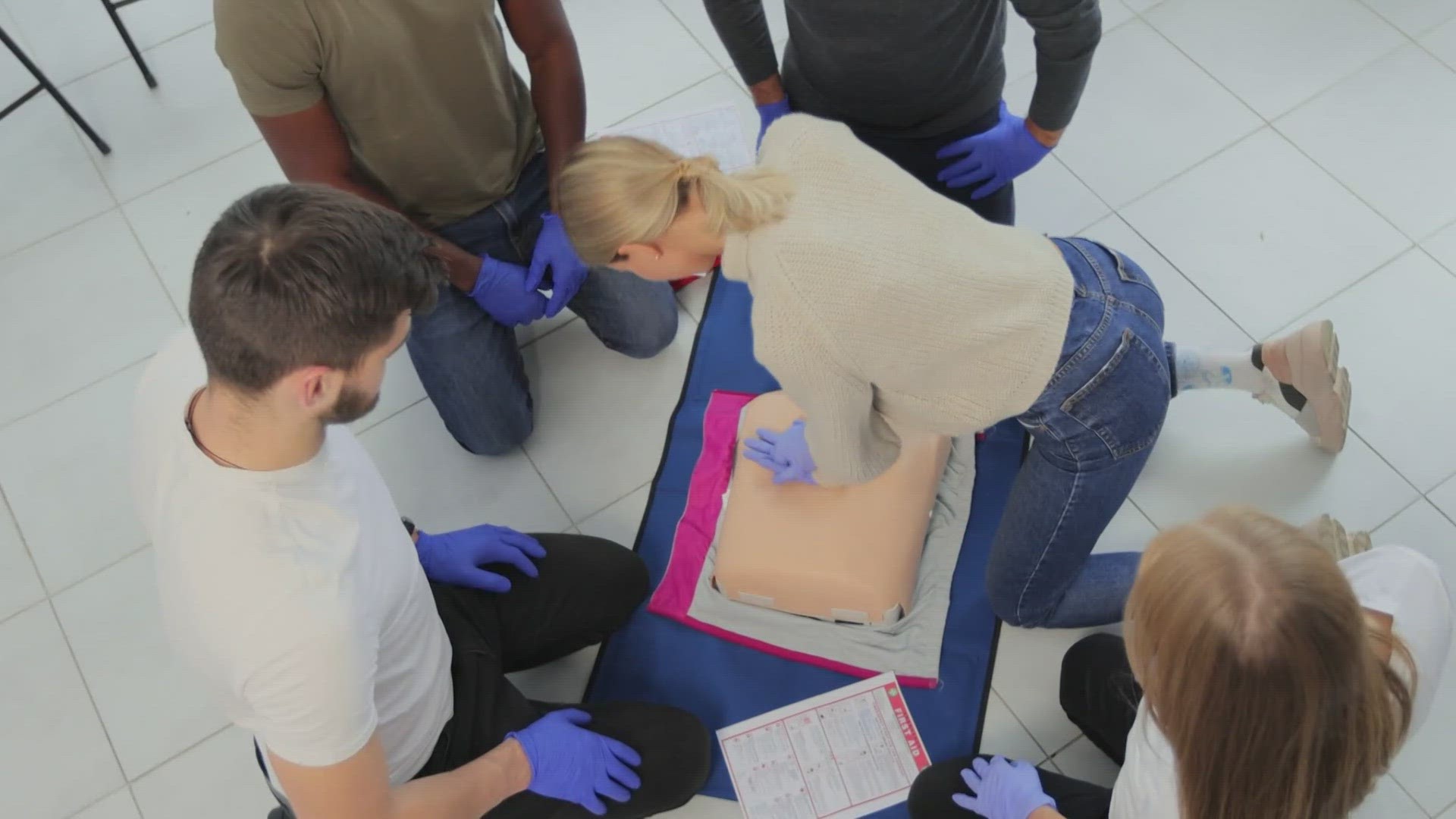MESA, Ariz. — In the chaotic aftermath of a drowning, it’s first responders rushing in to save a life. Their critical skills can make or break a person’s chance of survival. But there’s one skill that anyone can learn, and it makes all the difference in the world — CPR.
Drowning is the leading cause of death for children ages 1 to 4 in Arizona; double the rate of car accidents, the next most common cause of death. Meghan Chute and Heather Patterson, safety education specialists with the Mesa Fire Department, are working to bring that number down by teaching parents life-saving techniques.
“This can happen to anybody, it can happen to any family. No matter how good your supervision is, kids are sneaky and they find a way to get past you,” Patterson said.
While prevention is always the best option, CPR is the last line of defense.
[Insert ABCs of Water Safety story]
“We do not want it to get to this stage. We want you to use those barriers around your pool, have adult supervision, have your kids in swim classes,” Patterson explained.
But knowing how to administer CPR can make a difference in a worst-case scenario. That’s why organizations like the Mesa Fire Department offer non-certification CPR classes that are free to the public.
“Knowing how to start CPR is often the difference in a survival chance for the person who is being treated,” Patterson said.
After a drowning, the first thing to do is check if the person is responsive, Chute says. If they’re not, call 911 immediately. If the person isn’t breathing normally, that’s when CPR should begin.
“I'll put the heel of my hand on the center of their chest. And then I am going to pump their heart. And I will do this until I count to 30. So I would do 30 compressions. So 28, 29, 30, then I'm going to pinch his nose, tilt his head back. I will cover his mouth with my mouth and do two rescue breaths, and immediately start ]compressions again]…” Patterson explained as she demonstrated the technique.
Patterson says to keep doing that until emergency services arrive. CPR takes a lot of energy, and more force than people expect. If possible, switch off with another person nearby as needed.
As for administering CPR to an infant, use two fingers instead of two hands. As Patterson says, “you just have to use a little less pressure because obviously an infant or a child's bones aren't as solid or as hard as an adult's bones.”
Unfortunately, these skills can’t be learned entirely by watching a video or reading an article. That’s why it’s important to attend an in-person class to learn exactly how to give CPR.
“What we want you to do is make sure you're compressing hard enough,” Patterson said. “Coming in to take a class, we'll show you how hard you actually need to press on someone's chest in order to get a quality compression.”
But knowing the skill can help save a life.
“Once you have those skills, they’re with you for a lifetime.”
To register for a CPR or Lifesaver class, you can click here visit the Mesa Fire Department website.

